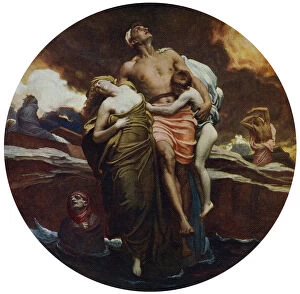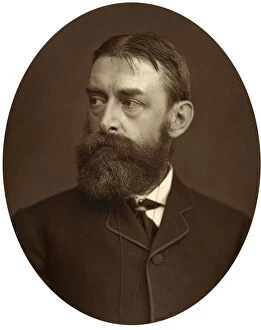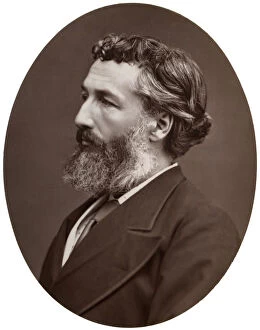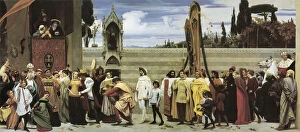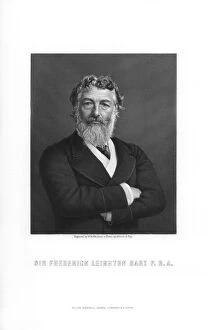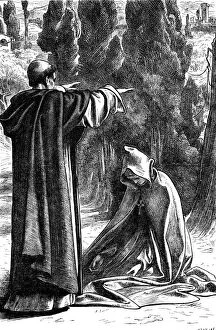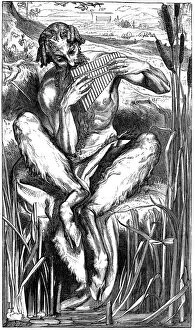Baron Leighton Collection (#2)
Baron Leighton: A Master of Artistic Expression Frederic Leighton, known as Baron Leighton
All Professionally Made to Order for Quick Shipping
Baron Leighton: A Master of Artistic Expression Frederic Leighton, known as Baron Leighton, was a prominent British artist who left an indelible mark on the art world during the late 19th century. His works encompassed various themes and styles, showcasing his exceptional talent and versatility. One of his notable pieces is "The Athlete Wrestling with a Python" (c1880-1882), created by A Gilbert. This sculpture captures the intense struggle between man and beast, symbolizing the eternal battle against adversity. In "A Condottiere" (1871-72), Leighton showcases his mastery in capturing human emotion through portraiture. The painting depicts a military leader adorned in armor, exuding strength and determination. "Lachrymae" (1894-95) evokes deep introspection as it portrays a woman lost in thought amidst delicate drapery. It reflects Leighton's ability to convey complex emotions through subtle gestures and exquisite attention to detail. "The Last Watch of Hero" (1887) is another masterpiece that demonstrates Leighton's fascination with Greek mythology. This poignant scene depicts Hero anxiously awaiting her lover's return from sea, showcasing the artist's skillful use of light and shadow to create dramatic tension. Lord Leighton himself became the subject of several portraits throughout his career. In "Lord Leighton" (c1890), captured by W&D Downey, we see him portrayed as an esteemed figure embodying dignity and refinement. "The Late Lord Leighton, P. R. A. " (1878-1896) by Moritz Klinkicht immortalizes Baron Leighton after his passing. This portrait pays tribute to his legacy as one of Britain's most celebrated artists. Leighton also made significant contributions to art publications like "The Magazine of Art, " where he was featured in lithographic form in 1878. This further solidified his reputation as a leading figure in the art world.

